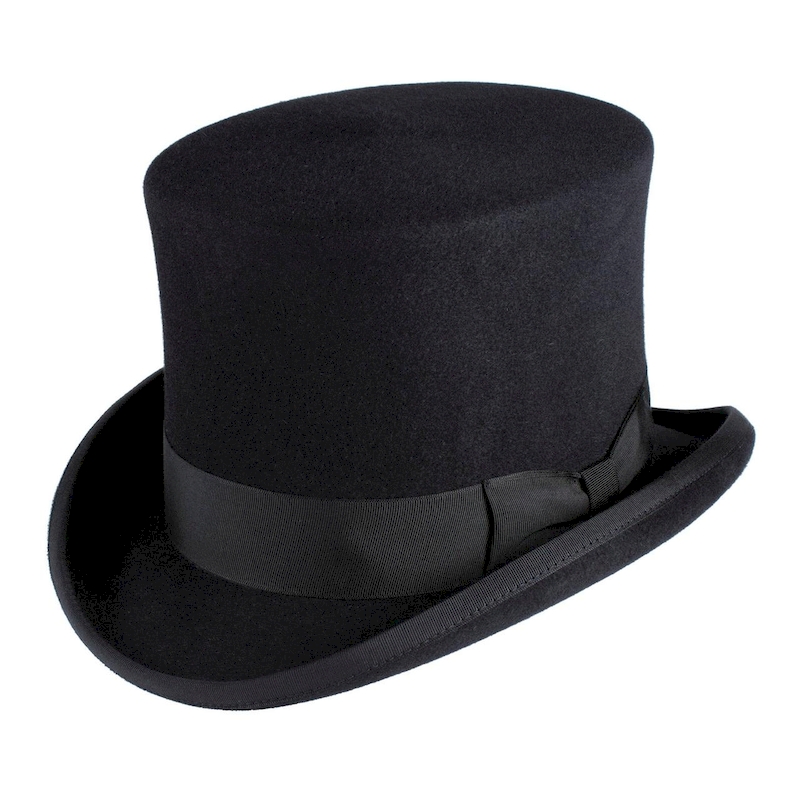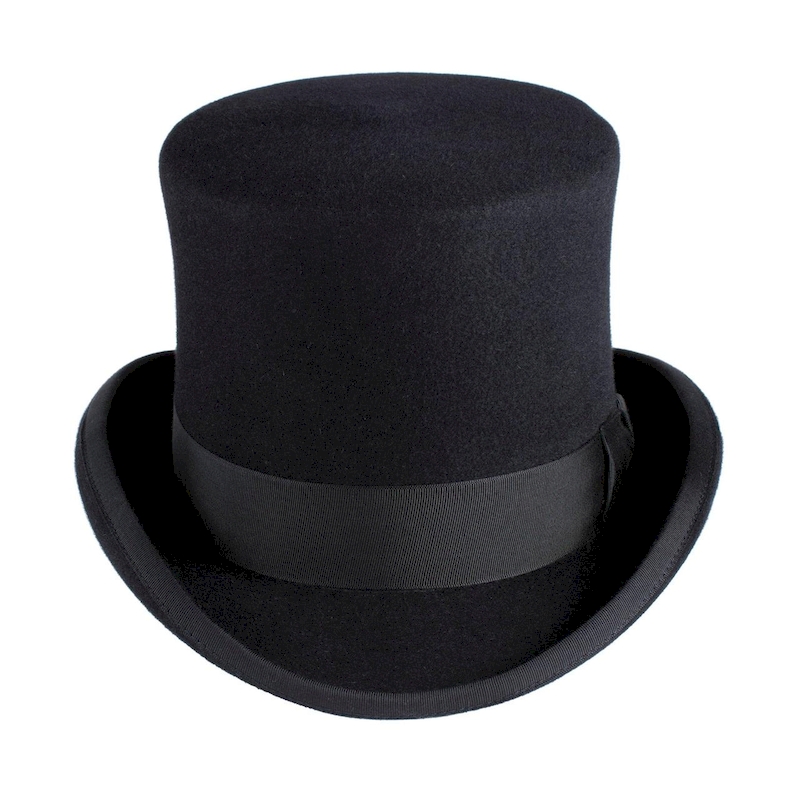The top hat is an enduring symbol of sophistication and formality, highly recognized in contemporary culture as a staple of well-dressed gentlemen. Dating back to the 18th century, this iconic piece of headgear has woven itself deeply into the fabric of social status, profession, and even art and entertainment. But who wears a top hat? While its early adopters were members of the upper classes, including aristocrats and fashionable gentlemen, the top hat has evolved over time. Today, it is adorned by historical re-enactors, performers, and the occasional modern dandy seeking to make a statement. Worn at a variety of events ranging from formal weddings to theatrical performances, the top hat’s symbolism extends far beyond fashion. This article delves into the history of the top hat, examining its evolution, cultural significance, variations, and the different groups and occasions where it is often worn.

A Brief History of the Top Hat
The history of the top hat is rich and multifaceted, beginning its journey in the late 18th century. It first emerged during a time in which fashion was closely tied to social status, and headwear played a crucial role in signaling that status.
Origins in Fashion
The top hat can trace its lineage back to earlier styles of men’s headgear characterized by taller, cylindrical shapes. Originally, the top hat was known as the “high hat” or “stovepipe hat,” and it gained popularity among the British upper classes in the early 19th century. Notable figures, such as Beau Brummell, whose fashion sense revolutionized men’s clothing in Regency England, contributed significantly to establishing the top hat as a fashionable staple.
Symbol of Aristocracy
By the Victorian era, the top hat had solidified its status as a symbol of aristocracy and power. It was an essential accessory for the gentry and ensured that the wearer stood out in any social gathering. High society events, theatre performances, and elite functions created an environment where the top hat was indispensable.
The Influence of Politics
Politics also influenced the popularity and significance of the top hat. Many famous politicians, including the likes of Abraham Lincoln and Benjamin Disraeli, wore top hats as part of their public personas, which helped to entrench their association with power and authority.
Types of Top Hats
While one may think of the top hat as a singular style, various types have evolved over time, each with its unique design and cultural significance.
The Classic Silk Top Hat
The classic silk top hat is the most recognized form of this headgear. Often characterized by its tall, straight crown and wide brim, this hat is crafted from silk moiré (a type of fabric that has a unique wavy appearance).
- Occasions: Traditional formal events, such as weddings, balls, and state functions, often see this type of top hat donned by gentlemen in full evening or formal attire.
The Wool Felt Top Hat
Wool felt top hats are similar in shape to the silk version but are made from wool or a wool blend. They have a more casual aesthetic compared to their silk counterpart and are available in various colors.
- Occasions: Wool felt top hats are often worn during autumn and winter festivities or outdoor events where durability is favored.

The Gibus Hat
The Gibus hat, also known as the collapsible top hat, has a secret mechanism that allows it to be folded down for easy transport.
- Occasions: This convenient style tends to be favored by theatre performers and magicians, who benefit from its portability while still maintaining a dapper appearance.
The Opera Hat
Similar to the Gibus, the opera hat is designed for evening wear and can be folded for convenience. However, it typically has a more elaborate design with decorative embellishments.
- Occasions: It is primarily worn during opera performances and elegant formal gatherings.
The Soft Hat
Although less formal, the soft hat style resembles a top hat with a softer crown and brim that is more flexible.
- Occasions: Soft hats are often worn during less formal events or by individuals opting for a more relaxed appearance while still embracing elements of sophistication.
Who Wears a Top Hat?
Over time, the demographics of who wears a top hat have changed significantly. Various groups and individuals have adopted this accessory for different reasons.
The Elite and High Society
Historically, the top hat has been the go-to headgear for high society and the elite. Members of the aristocracy and wealthy businessmen regularly donned top hats at formal events to signify their status and dominance in society.
Politicians and Leaders
Many prominent politicians and leaders have been seen wearing top hats throughout history. Figures like U.S. President Abraham Lincoln are often associated with the hat, helping to reinforce its image as a symbol of authority.
Performers and Entertainers
In these modern times, performers, especially in the world of theatre, magic, and circus performances, often wear top hats as part of their costumes. The hat enhances their act and contributes to a particular aura of charisma and charm.
Fashion-forward Individuals and Dandies
Fashion-forward individuals and trendsetters have continued to embrace the top hat in contemporary times. Styles have evolved, with many modern fashionistas incorporating top hats into their outfits, embracing vintage charm while adding a unique twist to their look.
Weddings and Formal Events
Top hats are frequently worn at weddings, especially for grooms and formal guests aiming for a distinctive and elegant appearance. In such settings, the top hat adds sophistication to traditional formal attire.
Cultural and Historical Re-Enactors
Cultural groups and historical re-enactors often emulate styles from the past, with the top hat featuring prominently as part of this endeavor. Such re-enactors don these hats to provide authenticity to historical representations.
How to Choose the Right Top Hat
Choosing the right top hat requires consideration of various factors, including occasion, materials, and style preferences. Here are some guides to help you select the perfect top hat:
Understand Your Needs
First and foremost, consider the events and occasions you plan to attend. Are you looking for a formal accessory for a wedding, or are you searching for a costume piece for a performance? Understanding your needs will guide you toward the right type of hat.
Material Matters
The material of the top hat significantly affects its aesthetic and practicality. Silk tops are optimal for formal events, while wool felt options provide better durability for outdoor settings. Choose a material that aligns with your intended use.
Choose the Right Size
Ensure that you choose the right size for your hat. Measure your head circumference and compare it to the sizing chart provided by the manufacturer to find the perfect fit. A well-fitted hat increases comfort and appearance.
Consider Style
Top hats come in various styles, from classic silhouettes to modern designs. Consider your personal style and the overall aesthetic you wish to achieve when making your selection.
Try Before You Buy
If possible, visit a store to try on various styles and sizes before making a purchase. Wearing the hat will help assess comfort and fit as you make your decision.
Maintaining Your Top Hat
Once you’ve chosen and acquired your top hat, proper maintenance is key to keeping it looking pristine. Here are several maintenance tips:
Cleaning Techniques
Regular cleaning is essential, especially if you’ve worn your hat frequently. For silk top hats, dust with a soft brush or cloth. For wool felt hats, use a damp cloth or hat cleaner. Refer to the care tag for specific instructions based on the material.
Storing Your Top Hat
When not in use, store your top hat properly to preserve its shape. Keep it in a hat box or on a shelf in an upright position. Avoid placing heavy objects on top of it, as this can cause distortion.
Reshaping
If your top hat becomes slightly misshapen, a professional hat cleaner can help restore its original form. Alternatively, you can fill the hat with tissue paper to help maintain shape while it’s in storage.
Avoiding Exposure to Elements
Keep your top hat away from direct sunlight or extreme humidity, as these conditions can lead to fading or mildew. Protecting your hat from the elements will extend its lifespan.
Regular Inspections
Periodically check your hat for any signs of wear, including fraying or dirt accumulation. Addressing issues early can help prevent further damage and maintain the aesthetics of your hat.

Conclusion
The top hat is an enduring accessory that has evolved throughout history, worn by a diverse range of individuals, from aristocrats and politicians to performers and modern fashionistas. Understanding who wears a top hat and the various occasions it is appropriate enhances its significance as a symbol of sophistication and style.
From choosing the right type to maintaining your hat’s condition, this guide covers everything you need to know about this iconic piece of headgear. Whether attending a formal gathering, performing on stage, or embracing vintage fashion, the top hat serves as a versatile accessory that transcends time and style.
By following the insights provided, you’ll be well-prepared to find, care for, and wear a top hat that not only complements your attire but also celebrates its rich heritage. The top hat is more than just an accessory; it’s a statement of elegance and individuality, bridging the gap between history and contemporary fashion.

